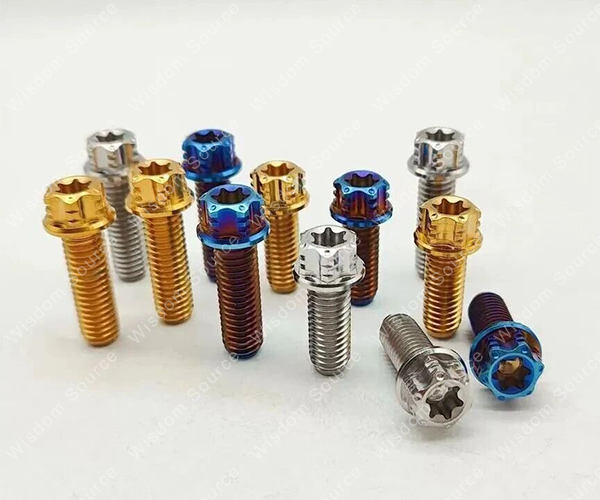Analysis Of Titanium Alloy Screw Mold Polishing Method
Analysis Of Titanium Alloy Screw Mold Polishing Method
In the process of diversified development of industrial products, improving the quality of molds that directly affect product quality has become a key task. In the manufacturing process of titanium alloy screw molds, smooth processing and mirror processing after shape processing, that is, surface grinding and polishing of parts, are important processes to improve the quality of molds. Mastering the appropriate polishing method can not only improve the quality and service life of titanium alloy screw molds, but also further ensure product quality.
1. Mechanical polishing
Mechanical polishing removes protruding parts of the surface of the workpiece by cutting or causing plastic deformation of the surface of the material, thereby obtaining a smooth surface. Tools such as oilstone strips, wool wheels, sandpaper, etc. are usually used, mainly manual operation. For workpieces with high surface quality requirements, the method of ultra-fine polishing can be used. Ultra-fine grinding and polishing adopts special abrasive tools. In the grinding and polishing liquid containing abrasive, it is pressed tightly on the surface of the workpiece to be processed for high-speed rotational movement. Using this technology, the surface roughness of the workpiece can reach Ra0.008 µm, which is the lowest surface roughness among many polishing methods. This method is often used in optical lens molds. Mechanical polishing occupies a major position in the field of mold polishing.
2. Chemical Polishing
Chemical polishing is to dissolve the material in a chemical medium, so that the microscopic protruding part of the surface dissolves first than the concave part, and then obtain a smooth surface. This method can polish workpieces with complex shapes, and multiple workpieces can be polished at the same time, which is more efficient. However, the surface roughness obtained by chemical polishing is generally Ra10 µm.

3. Electrolytic Polishing
The basic principle of electrolytic polishing is similar to that of chemical polishing, which relies on selectively dissolving tiny protrusions on the surface of the material to make the surface smooth. Compared with chemical polishing, electrolytic polishing can eliminate the influence of cathode reaction and the polishing effect is better.
4. Ultrasonic Polishing
Ultrasonic polishing uses ultrasonic vibration on the cross-section of the tool, and processes brittle and hard materials with the help of abrasive suspension. The specific operation is to put the workpiece into the abrasive suspension and place it in the ultrasonic field together. Relying on the oscillation of ultrasonic waves, the abrasive is ground and polished on the surface of the workpiece. The macroscopic force of ultrasonic processing is small and will not cause deformation of the workpiece, but tooling production and installation are relatively difficult.
5. Fluid Polishing
Fluid polishing relies on the flowing liquid and the abrasive particles it carries to scour the surface of the workpiece to achieve the purpose of polishing. Hydrodynamic grinding is driven by hydraulic pressure. The medium is mainly made of special compounds (polymer-like substances) with good fluidity at lower pressures and incorporated into abrasives. Silicon carbide powder can be used for abrasives.

6. Magnetic Grinding And Polishing
Magnetic grinding and polishing uses magnetic abrasives to form abrasive brushes under the action of magnetic fields to grind the workpiece. This method has high processing efficiency, good quality, and easy to control processing conditions.Using suitable abrasives, the surface roughness after processing can reach Ra0.1 µm.
7. EDM Ultrasonic Composite Polishing
In order to improve the polishing speed of workpieces with a surface roughness Ra of more than 1.6µm, ultrasonic waves and a dedicated high-frequency narrow pulse high-peak current pulse power supply can be used for composite polishing. This composite polishing method combines the advantages of ultrasonic and electric spark polishing, which can effectively improve the polishing efficiency and quality.
Different polishing methods have their own characteristics and scope of application. In the actual polishing process of titanium alloy screw molds, it is necessary to choose the appropriate polishing method or use a combination of multiple methods according to the specific requirements of the mold, the complexity of the shape, the surface roughness requirements and other factors, in order to achieve the ideal polishing effect, improve the quality of the mold, and lay the foundation for the production of high-quality titanium alloy screw products.
